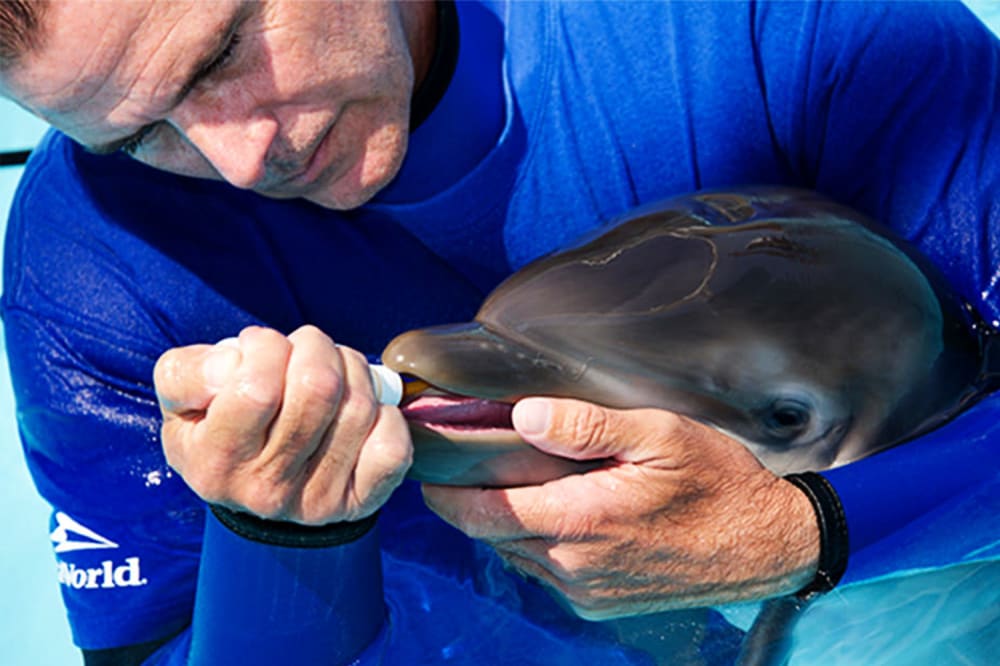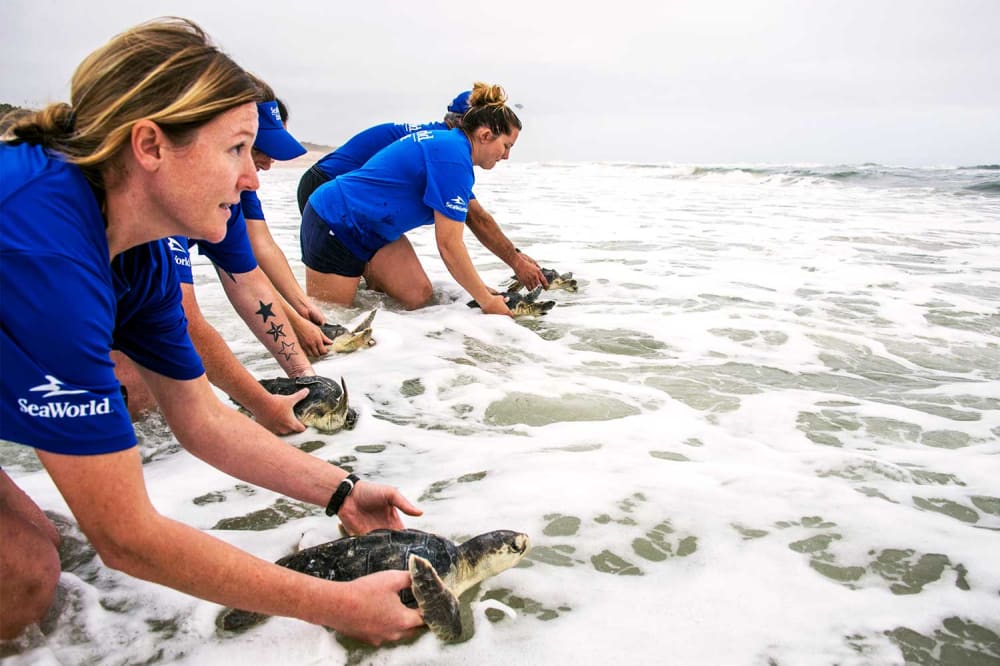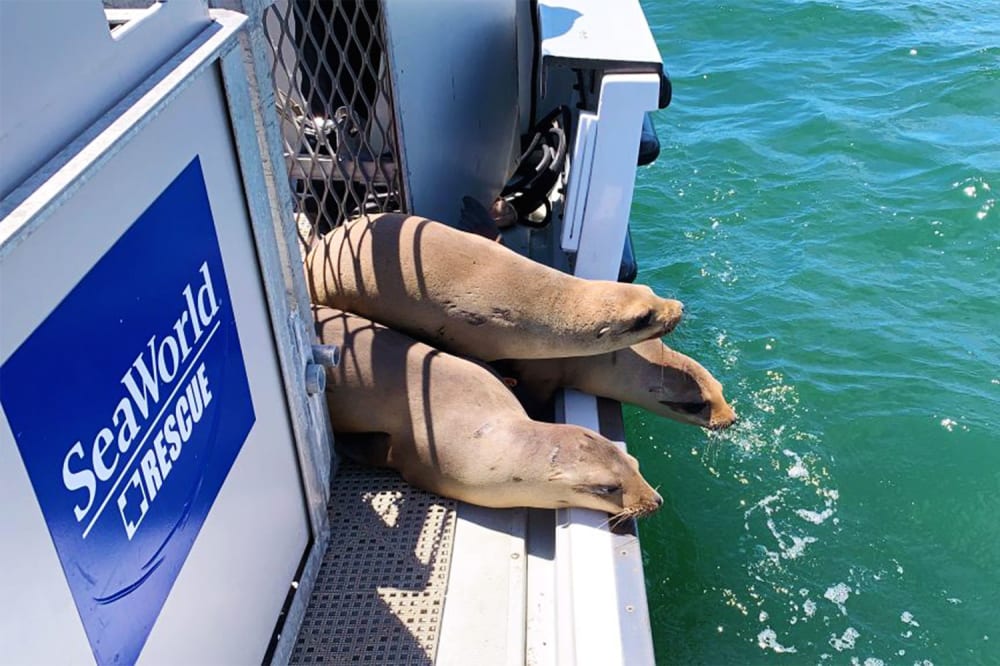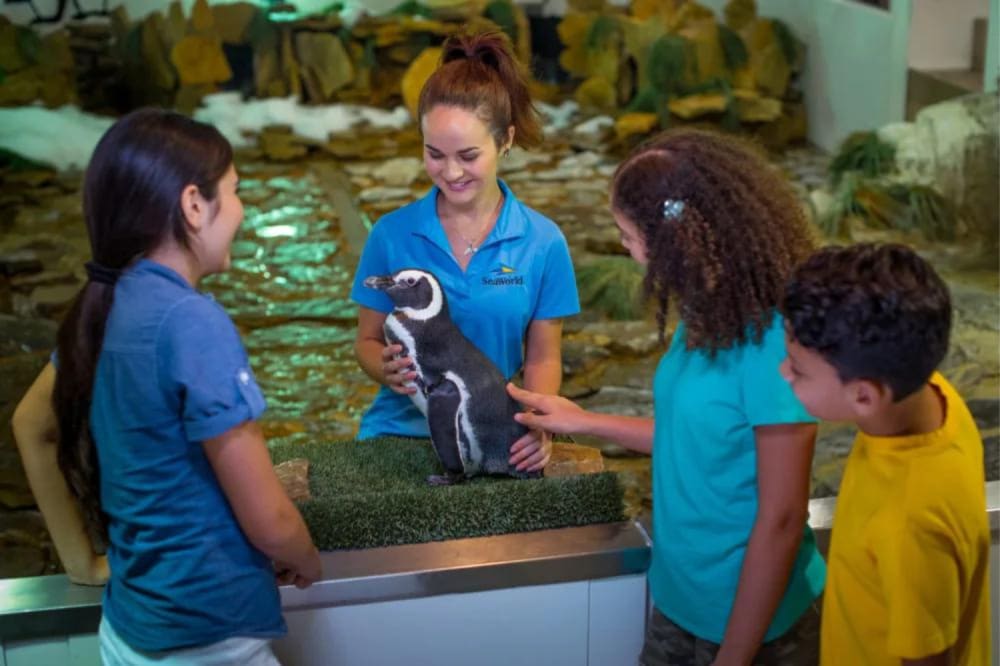From the ocean to the skies, SeaWorld is world famous for its aquatic parks and rollercoasters, but one facet of their work that might be lesser known is their conservation efforts. For example, did you know that SeaWorld has rescued more than 40,000 animals over the past 50 years? That's a lot of wildlife! What's more, SeaWorld's goal is always to return rescued animals to their natural environments.
Read on to learn more about the history of SeaWorld's conservation efforts, their ongoing animal care, and how you can get involved in 2023 and beyond.
A portion of proceeds from SeaWorld tickets and in-park purchases goes toward funding rescue and rehabilitation operations. Picture having to re-home a 1,000-pound beluga whale or manatee. Such huge efforts need equally large vessels and high-quality specialist equipment for the job.
To help SeaWorld reach injured animals in time, they have a hotline open 24/7, 365 days a year and a dedicated animal rescue team. Their rescue experts ensure the animals at risk are cared for from the moment they are rescued. For example, SeaWorld developed a unique feeding formula for orphaned manatees and a hand-feeding baby bottle that imitates a mother manatee.

This specialist approach is how SeaWorld has saved over 40,000 animals, from Alaska to the Atlantic Ocean, since 1965.
Animal rehabilitation to full recovery
SeaWorld has looked after animals with cracked shells, missing limbs, and shark wounds. In fact, animals under SeaWorld's care are in the best hands possible, with over 700 dedicated animal experts, zoologists, dietitians, and veterinarians providing the highest quality care.
SeaWorld also ensures the animals receive personalised treatment. Take Lederhosen, the endangered green turtle. This reptile had a shattered shell and a damaged femur, as well as cold shock and buoyancy concerns. SeaWorld's expert team created a unique vest to aid stability while recovering. One of SeaWorld's many success stories, Lederhosen happily returned to the waters.

SeaWorld is independently certified and accredited by the Association of Zoos & Aquariums (AZA), American Humane, and the Alliance of Marine Mammal Parks & Aquariums (AMMPA).
The return of wildlife to their natural habitat
SeaWorld's ultimate goal is to return animals to their natural environment with a second lease on life. From recently releasing endangered turtles at Canaveral's National Seashore to sailing 140 miles off the Gulf of Mexico to re-home a 725 lb pilot whale, SeaWorld goes that extra mile to make re-homing happen.

Yet what about animals who may not be able to thrive in their habitat? Although SeaWorld's goal is always to return rescued animals to their natural environments, for some animals this isn't possible. In those instances, wildlife authorities determine whether an animal can be returned, and if not, zoos and aquariums like SeaWorld provide long-term care and permanent homes. For example, Tyonek, the Cook Inlet beluga whale, was rescued as a severely malnourished orphaned baby in Alaskan waters. Tyonek didn't learn survival skills and was determined non-releasable by
NOAA Fisheries, and so SeaWorld San Antonio was selected as his new home, because it was the location best suited for Tyonek to thrive.
Worldwide conservation projects
Since its start in 2003, the SeaWorld & Busch Gardens Conservation Fund has reached a milestone of more than $19 million in grants to organisations focused on the conservation of animals. This includes 10 new grants made in 2021 for marine-specific programs spanning animal conservation and crisis, marine fish sustainability and marine aquatic debris clean-up. Plus, SeaWorld is committed to continue its contributions to research, both leading on studies and providing researchers access to their parks.
Want to help conserve and protect wildlife around the world, you can by purchasing a SeaWorld Parks Extra ticket. With every UK booking, SeaWorld donates $2 to UK wildlife charities to help fund projects at home and abroad. So far, SeaWorld has funded projects with Chester Zoo, Blue Marine Foundation, the Horniman Museum's Project Coral, The Big Cat Sanctuary and Tusk.
The education of SeaWorld visitors
SeaWorld provides experiences that inspire guests to protect animals and the wild wonders of our world. Through up-close animal encounters, educational exhibits and innovative entertainment, SeaWorld aims to heighten awareness of the world around us and increase understanding of the plight of animals in the wild. And little by little, change happens when people act on their awareness and change their habits.

Busch Gardens Tampa Bay Animal Care Center
At Busch Gardens Tampa Bay, staff care for over 200 animal species and guests can observe medical procedures conducted in front of their own eyes, from x-rays, treatments, and even surgeries. You can
read more about Busch Gardens and its Animal Care Center here.
Ready to plan your SeaWorld adventure? Check out our award-winning Orlando holidays to SeaWorld area hotels and resorts. close



